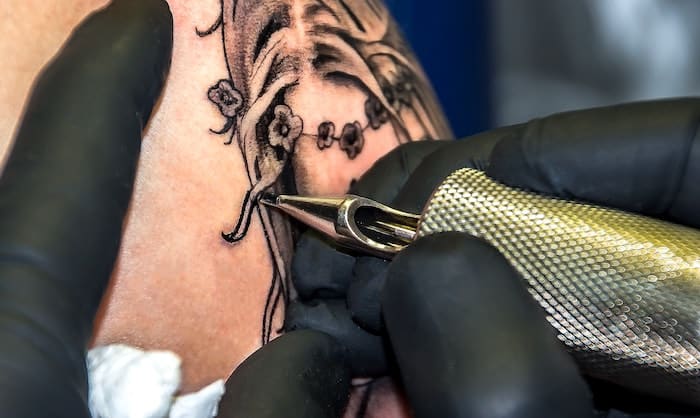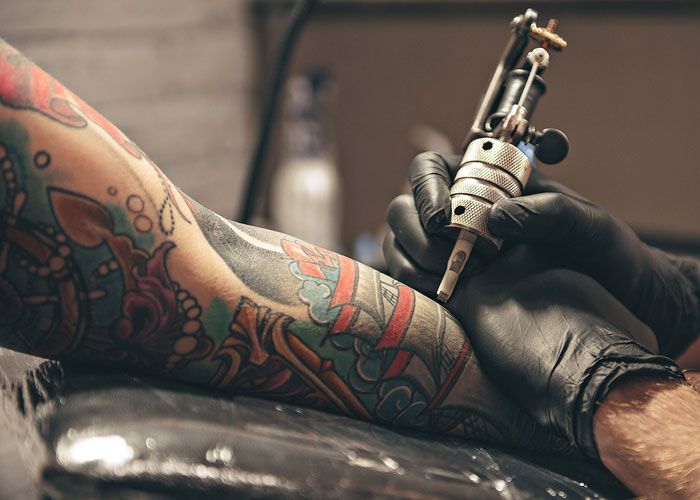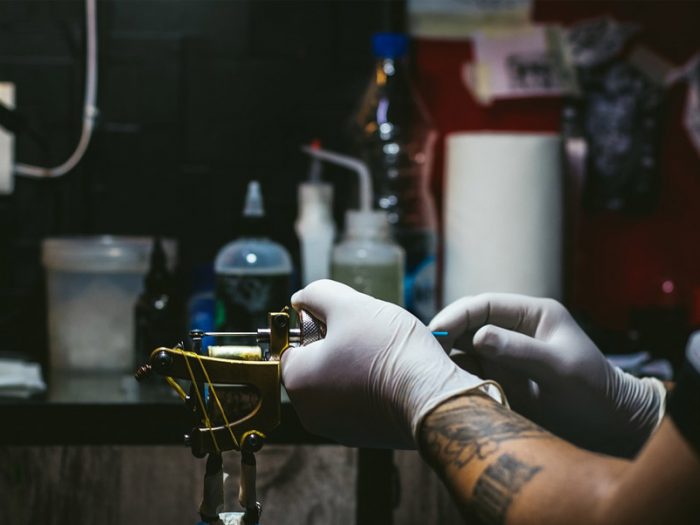How Long Does It Take A Tattoo To Heal?

Tattoos have been a form of self-expression, art, and cultural significance for centuries. Getting inked is a deeply personal choice, and once you decide to take the plunge and get a tattoo, one of the most common questions that arise is, “How Long Does It Take A Tattoo To Heal?” The answer to this question varies depending on several factors, including the size and complexity of the tattoo, your body’s natural healing process, and how well you take care of your new ink. In this comprehensive guide, we will delve into the intricate process of tattoo healing, offering insights, tips, and a detailed timeline to help you navigate the journey to a fully healed tattoo.
The Tattoo Healing Process Can Be Broadly Categorized Into Four Distinct Stages:
Tattoos may look stunning right after they are done, but they are, essentially, an open wound. To understand how long it takes for a tattoo to heal fully, it’s crucial to comprehend the stages of the healing process:
Immediate Aftercare (Days 1-7): The first week following a tattoo is critical for its healing. Your tattoo artist will apply an antibacterial ointment and cover it with a bandage. During this time, you should keep the tattoo clean, avoid excessive moisture, and follow your artist’s aftercare instructions meticulously.
Peeling and Scabbing (Days 7-14): As the initial healing progresses, you might notice your tattoo beginning to peel and develop scabs. This is a natural part of the process as your skin repairs itself. It’s essential not to pick or scratch at these scabs, as doing so can damage the tattoo and increase the risk of infection.
Itching and Flaking (Days 14-30): The itching sensation can become intense during this phase. However, refrain from scratching, as it can disrupt the healing process. Instead, lightly moisturize the tattoo to soothe the itchiness and help with flaking.
Settling In (Days 30-60): By the end of the first month, your tattoo should be mostly healed. It may still appear slightly raised or shiny, but this is part of the healing process. Continue to moisturize and protect your tattoo from direct sunlight.
Final Healing (Months 2-6): Complete healing can take several months. During this period, your tattoo will gradually settle into your skin’s natural texture, and any remaining scarring or raised areas should diminish. Be patient and diligent with your aftercare routine.
Now that we’ve outlined the general healing process let’s delve into the factors that can influence how long it takes for a tattoo to fully heal.
Factors Affecting Healing Time
Tattoo Size and Complexity: The size and intricacy of your tattoo play a significant role in how long it takes to heal. Smaller, simpler designs may heal more quickly than larger, more detailed ones simply because there is less area for your body to repair.
Location on the Body: The placement of your tattoo matters. Areas with more blood flow, like the arms and legs, tend to heal faster than areas with less circulation, such as the feet or ankles. Tattoos on joints or bony areas may take longer to heal due to constant movement and friction.
Tattoo Depth: The depth at which the tattoo artist injects the ink can impact healing time. Tattoos placed too deep may take longer to heal, as your body has to work harder to remove excess ink.
Your Age and Health: Younger individuals often heal faster than older ones. Additionally, your overall health, diet, and lifestyle choices can affect healing. A healthy lifestyle with proper nutrition can expedite the healing process.
Immune System: A robust immune system is crucial for faster healing. Conditions that weaken your immune system, such as certain illnesses or medications, may slow down the healing of your tattoo.
Tattoo Aftercare: How well you take care of your tattoo during the healing process is the most critical factor. Following your tattoo artist’s instructions for cleaning, moisturizing, and protecting your tattoo from sunlight and contamination is essential for a smooth healing journey.
Now that we’ve explored the factors influencing healing time let’s break down the tattoo healing timeline in more detail.

Tips for Speeding Up Healing
The answer to the question, “How long does it take a tattoo to heal?” can vary, but you can play an active role in speeding up the healing process by following these tips:
Follow Aftercare Instructions: The most crucial aspect of speeding up tattoo healing is to follow your tattoo artist’s aftercare instructions diligently. This typically involves keeping the tattoo clean, moisturized, and protected from sunlight.
Keep It Clean: Gently wash your tattoo with mild, fragrance-free soap and lukewarm water. Avoid using harsh or scented soaps, as they can irritate the healing skin.
Moisturize Regularly: Apply a recommended tattoo-specific moisturizer or ointment to keep the tattoo hydrated. Moisturizing prevents excessive drying, which can lead to scabbing and slower healing.
Avoid Over-Moisturizing: While moisturizing is essential, overdoing it can suffocate the tattoo and hinder healing. Apply a thin layer of moisturizer as instructed by your artist.
Stay Hydrated: Proper hydration supports overall skin health and can aid in the healing process. Drink plenty of water to keep your skin hydrated from the inside out.
Eat a Balanced Diet: A diet rich in vitamins and nutrients, especially vitamins A and C, can promote skin health and expedite healing. Include fruits, vegetables, and lean proteins in your meals.
Avoid Tight Clothing: During the initial healing phase, opt for loose-fitting clothing to prevent friction and irritation of the tattooed area.
Limit Alcohol and Caffeine: Both alcohol and caffeine can dehydrate the body, which can impede the healing process. Consume them in moderation and increase your water intake.
Manage Stress: High stress levels can negatively impact the healing process. Engage in stress-reduction techniques like meditation, yoga, or deep breathing exercises.
Common Healing Issues
Here are some common tattoo healing issues:
- Infections: Infections can occur if the tattooed area is not kept clean or if you introduce bacteria to the healing tattoo. Signs of infection include increasing redness, warmth, swelling, pus, and severe pain. If you suspect an infection, seek medical attention immediately.
- Allergic Reactions: Some people may be allergic to tattoo ink or the products used during the aftercare process. Allergic reactions can manifest as itching, redness, rash, or hives. If you experience any of these symptoms, discontinue the use of the product and consult a healthcare professional.
- Excessive Scabbing: While some scabbing is normal during tattoo healing, excessive scabbing can be a problem. Overly thick or stubborn scabs can lead to color loss or scarring. Avoid picking at scabs, and follow aftercare instructions to minimize this issue.
- Blowouts: Tattoo blowouts occur when the ink spreads beyond the intended tattoo design. They can result in blurred lines and a less defined image. Blowouts are typically due to the tattoo needle going too deep into the skin.
- Fading or Discoloration: Some degree of fading or discoloration is normal during the healing process. However, excessive fading can occur if the tattoo is exposed to sunlight or not properly protected during the healing phase.
- Keloids and Hypertrophic Scarring: Keloids and hypertrophic scars are raised, thickened areas of scar tissue that can form over a tattoo. They are more common in individuals with a predisposition to scar formation. Proper aftercare can help reduce the risk of these issues.
- Delayed Healing: In some cases, tattoos may take longer to heal than expected due to factors like the individual’s overall health, immune system function, or the tattoo’s location. Be patient and continue following aftercare guidelines.
- Dryness and Itching: Tattooed skin may become dry and itchy during the healing process. Scratching can damage the tattoo and prolong healing. Use a recommended moisturizer and resist the urge to scratch.
- Inadequate Aftercare: Neglecting proper aftercare, such as not cleaning the tattoo, not moisturizing, or not protecting it from the sun, can lead to complications and slower healing.
- Ink Bleeding: Sometimes, ink may spread slightly beyond the lines of the tattoo, especially in areas with thin skin. This can result in a slightly blurred appearance.

Tattoo Healing Tips for Specific Body Areas
Arms (Forearms, Biceps, Upper Arms):
- These areas usually heal well because they have a good blood supply.
- Avoid clothing that may rub against the tattoo, especially if it’s on the inner forearm.
- Be cautious of sun exposure, and use sunscreen to protect the tattoo once it’s fully healed.
Legs (Calves, Thighs):
- Leg tattoos can take longer to heal because the skin is thicker.
- Elevate your leg to reduce swelling, especially if the tattoo is on the calf.
- Avoid tight clothing that may cause friction, and opt for loose-fitting pants or shorts.
Chest and Back:
- Tattoos on the chest or back can be exposed to clothing friction, so wear soft, breathable fabrics.
- Keep the area clean and moisturized but avoid applying too much lotion, as it may rub off on clothing.
Hands and Fingers:
- Hand and finger tattoos can be prone to fading because of frequent hand washing and exposure to the elements.
- Apply sunscreen to protect hand tattoos from sun damage.
- Be meticulous with hand hygiene to prevent infection.
Feet and Ankles:
- Tattoos on the feet and ankles may take longer to heal due to movement and friction.
- Elevate your foot to reduce swelling.
- Be cautious while wearing shoes and socks to avoid rubbing against the tattoo.
Neck and Throat:
- Neck tattoos may be more sensitive and prone to irritation.
- Wear loose, breathable clothing and avoid anything that may rub against the tattoo.
- Protect your neck from sun exposure with clothing or sunscreen.
Face and Head:
- Face and head tattoos can be challenging to heal due to frequent facial movements and potential exposure to cosmetics.
- Be gentle when washing your face and avoid scrubbing over the tattoo.
- Keep hair products, makeup, and sunscreen away from the healing tattoo.
Ribs and Ribcage:
- Rib tattoos can be particularly painful and may take longer to heal.
- Avoid tight clothing, such as bras or waistbands, that may rub against the tattoo.
- Breathe deeply and avoid heavy exercise during the first few days to minimize discomfort.
Inner Wrist and Elbow:
- Tattoos on these areas may experience more movement and bending, which can affect healing.
- Keep the area moisturized and protect it from friction.
- Avoid excessive wrist and elbow movements that could irritate the tattoo.
Stomach and Abdomen:
- Abdominal tattoos can take some time to heal due to body movements.
- Wear loose, comfortable clothing that won’t rub against the tattoo.
- Stay hydrated and maintain a healthy diet to support healing.
Conclusion
In conclusion, the question of how long does it take a tattoo to heal is one that often preoccupies those who have just undergone the transformative experience of getting inked. The journey from fresh ink to a fully healed masterpiece is a fascinating process that demands patience, care, and attention to detail.
While the exact timeline can vary depending on factors like tattoo size, location, aftercare, and individual healing characteristics, understanding the stages of tattoo healing is crucial. From the initial application of the tattoo, with its moments of excitement and anticipation, to the subsequent phases of peeling and scabbing, followed by the eventual settling and final healing, each stage is a vital chapter in the story of your tattoo’s evolution.
Frequently Asked Questions
Q1: Can you swim with a healing tattoo?
Ans: It’s best to avoid swimming or soaking in water for at least two weeks after getting a tattoo to prevent infection.
Q2: How long before you can exercise or go to the gym after getting a tattoo?
Ans: It’s best to avoid strenuous exercise or activities that cause sweating for at least two weeks after getting a tattoo.
Q3: What is the best way to clean a healing tattoo?
Ans: The best way to clean a healing tattoo is to gently wash it with mild, fragrance-free soap and lukewarm water, then pat it dry with a clean towel.
Q4: Can you apply sunscreen to a healing tattoo?
Ans: It’s best to avoid applying sunscreen to a healing tattoo until it’s fully healed, as this can irritate the skin and slow down the healing process.
Q5: How long should you avoid direct sunlight after getting a tattoo?
Ans: It’s best to avoid direct sunlight for at least two weeks after getting a tattoo to prevent fading and allow the skin to heal.